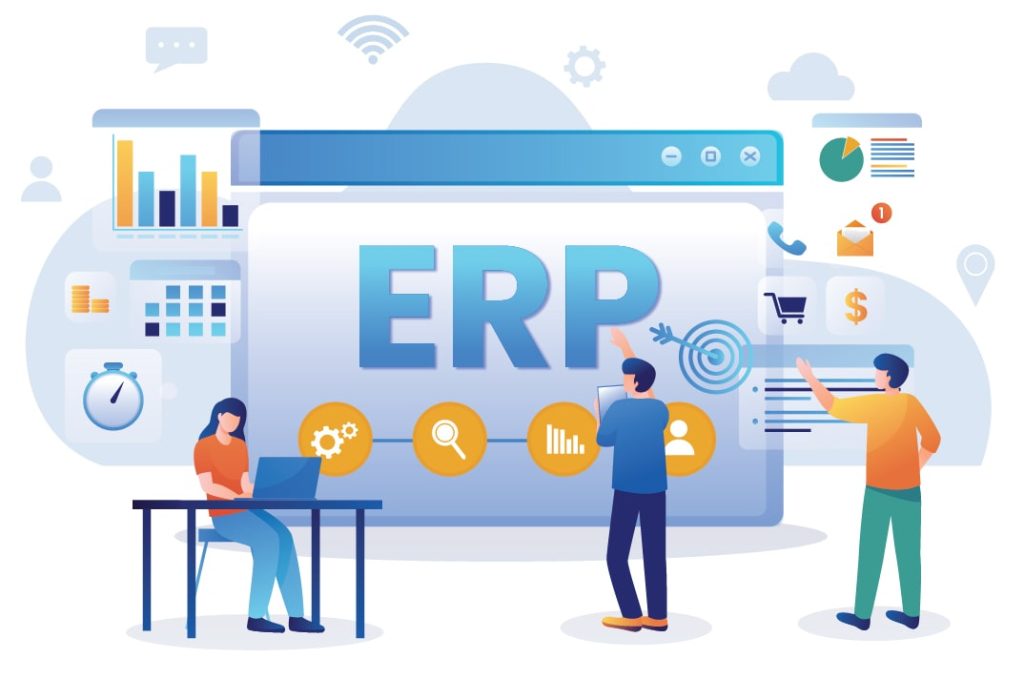Embarking on a successful ERP journey involves more than just implementing the system. Implementing an Enterprise Resource Planning (ERP) system is a monumental undertaking that goes beyond just installing new software. It requires comprehensive business transformation and organizational change management.

In this blog, we’ll delve into the crucial realm of User Training and Adoption Strategies, exploring key approaches to ensure seamless integration, maximize efficiency, and achieve lasting success with your ERP implementation.
ERP Strategies & Challenges
While ERP initiatives promise immense benefits like improved efficiency, reduced costs, and better data-driven decision-making, the road to success is filled with challenges. Failure rates for initial ERP implementations can be as high as 50%, with most projects exceeding budget and timelines.

Specialized strategies and diligent planning are imperative for organizations to realize value from their ERP investment and avoid becoming another statistic. This article provides best practices across the key stages of ERP implementations, from planning through post-go-live support. It also explores proven adoption techniques to drive user engagement with the new system.
Laying the Foundation: Objectives, Resources and Timelines

The first step is clearly defining the goals and scope of the ERP initiative, the business capabilities you want to impact, and how you will track ROI. Secure buy-in from executive leadership to visibly advocate and communicate the urgency of the project across the company. Establish a dedicated cross-functional team encompassing your best internal experts along with external consultants. Combining business knowledge with technical project management skills is ideal. Develop realistic timelines mapping out all implementation stages. While rushing through the process seems attractive, it often leads to issues down the road that negate any initial savings. Allocate sufficient time for requirements gathering, system configuration, testing, training, and change management.
Configuring the Software: Customization vs. Standardization

Resist over-customizing the ERP to match existing legacy processes and systems. While some customization will likely be unavoidable, leveraging standard best practice processes baked into ERP software delivers the most value. Exceptions should be justified based on unique competitive differentiators or regulatory compliance needs. Customizations deviating from industry standards make upgrades and maintenance more difficult long-term.
Migrating Data Strategically
Data migration errors are one of the biggest threats to ERP success. Hence, invest time upfront in thoroughly cleaning and organizing legacy data before importing it into the new system. Validate data accuracy through test migrations. Develop standardized data governance policies and mappings that will persist post-go-live.
Getting User Adoption: Training, Incentives and Gamification
No amount of technology investment will pay dividends without user adoption across your organization. Employees need the knowledge and motivation to leverage the ERP in their daily roles. Well-designed training programs customized by department and function are crucial.
Mix classroom and virtual sessions with self-paced online content for maximum flexibility. Incorporate real-world usage scenarios through simulations and demos. Identify change champions to reinforce training with peer coaching. Consider gamifying the learning process and recognizing ERP expertise. Monitor adoption metrics and continually assess proficiency.
Rigorous Testing and Quality Assurance
Subject the ERP environment to thorough testing at multiple levels. Start with unit and integration testing of individual modules, then validate end-to-end business processes through system testing. Conduct user acceptance testing with employees performing their actual transactions on the system. Fix any defects immediately before moving to the next testing cycle.

Have a user feedback loop to continuously collect observations even after the production launch. Testing and training should have significant overlap with users involved in both processes.
Deploying Strategically: Phased vs Big Bang
When it comes to finally deploying the ERP, organizations can take a phased approach by module, site, or business unit, thereby limiting risk and allowing lessons from initial groups to inform the broader rollout. This helps manage complexity but can extend timelines.
The alternative Big Bang cutover involves a single company-wide go-live date. This faster method works for smaller organizations or those with less complex implementations but has minimal margin for error. Organizations can also run the old and new ERP in parallel during the transition.
Ongoing Post-Go-Live Support
Just when users get accustomed to the system, project teams often scale back support prematurely. To prevent adoption drop-off, have dedicated helpdesk resources, online knowledge bases, continuous training content, and forums for users to exchange tips. Examine the fundamental reasons behind persistent problems through root cause analyses.
Measuring Success with Performance Metrics
Define ERP success measures aligned to your original business objectives, like cost reduction, cycle time improvement, or increased revenue. Monitor progress through data-driven dashboards. Conduct a post-implementation review to capture lessons learned, receive user feedback, and plan ongoing enhancements to maximize your ERP investment over the long term.
Conclusion
ERP implementations enable process transformation and data-driven decision-making vital for modernization. However, without meticulous planning and adoption strategies, projects often fail to meet expectations. By investing in change management, training, testing, and ongoing support, organizations can overcome the pitfalls to realize the full potential of an integrated ERP system.
Just remember, an ERP implementation is not merely a technical exercise but rather a catalyst for competitive advantage.
Explore our website to discover personalized ERP solutions for your organization. Gain a detailed understanding of how our services can assist you in achieving effective management solutions and more.
All images belong to their respective owners. Please email [email protected] if removal is required.




